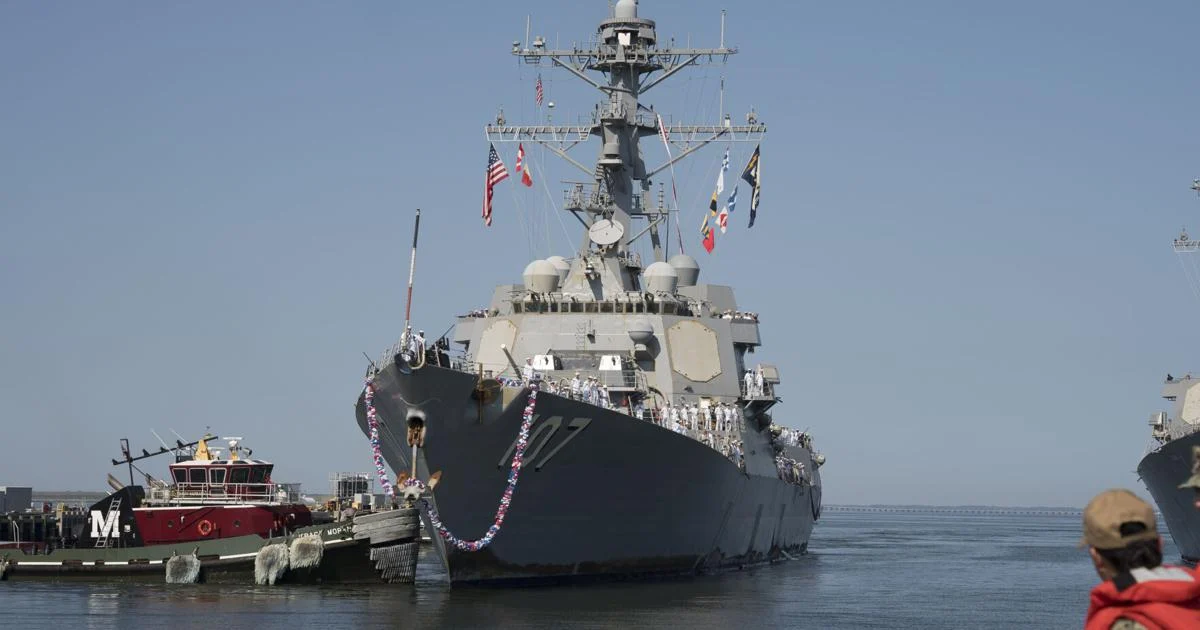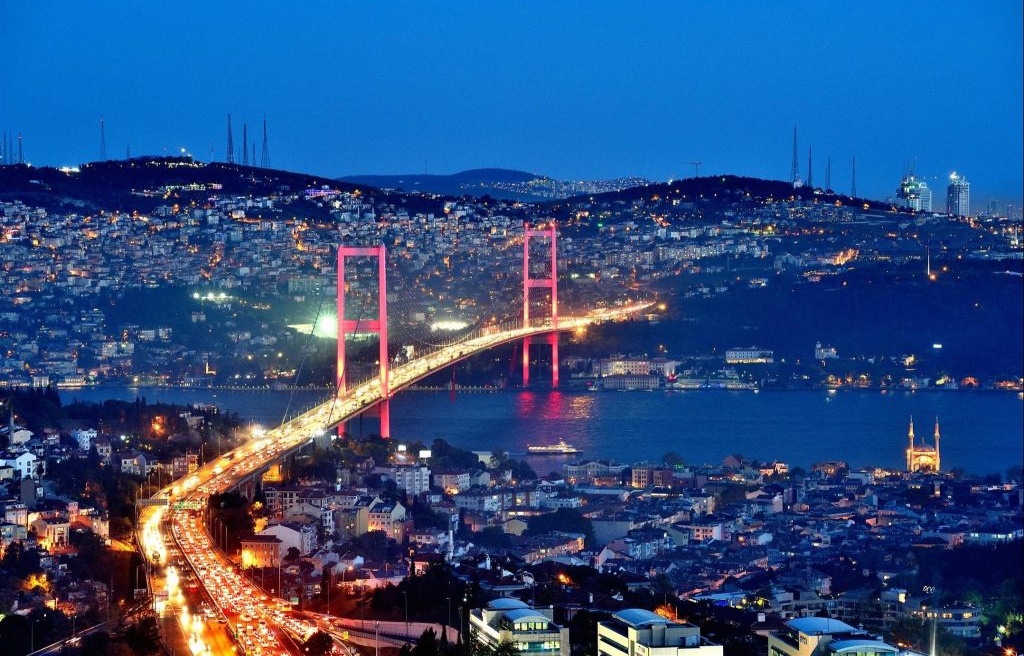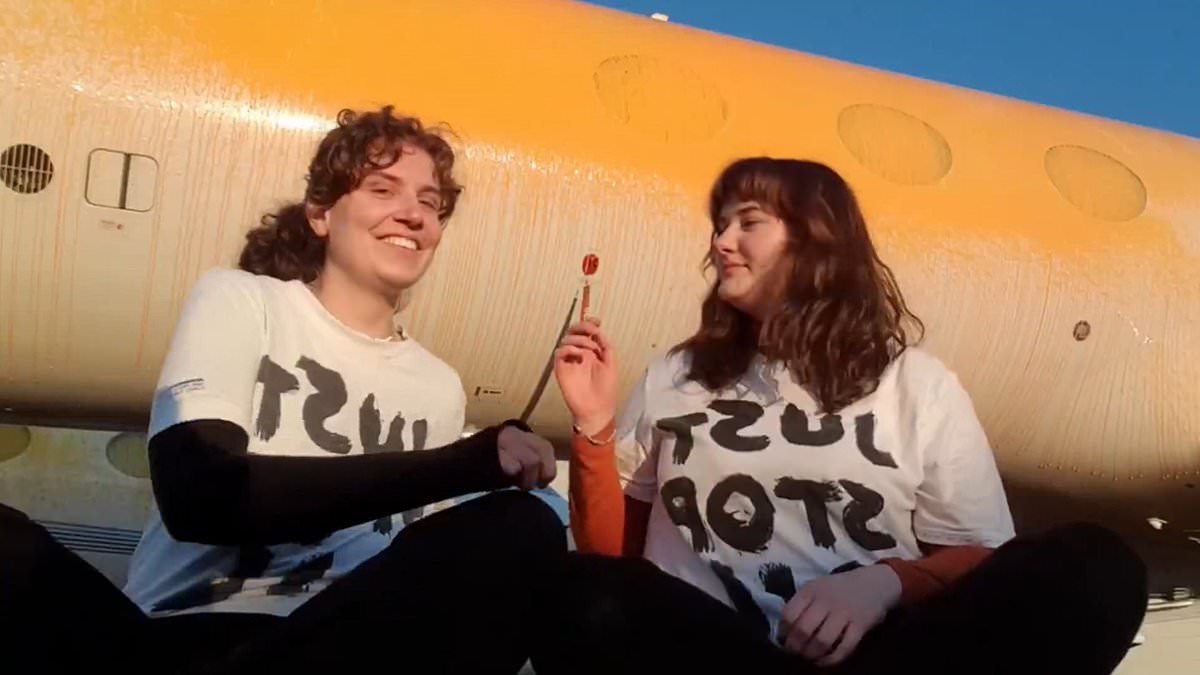Copyright trinidadexpress

The US guided-missile destroyer USS Gravely (DDG-107) arrived on the Northern coast of Trinidad this morning, a modern instrument of war and conflict now moored just 24 miles from the Venezuelan coast (and even less from its maritime border) at a moment when Caribbean tensions, brewing since late August, continue to harden. The US’ expansion of its military presence in the region (one of the largest in modern times) and at least ten lethal-boat strikes in the Pacific and Caribbean seas which have now killed at least 43, precede the ships visit to Trinidad and Tobago over the next four days. It comes at the request of the US government, according to Minister of Defense Wayne Sturge, who yesterday claimed the warship’s path to local shores was pre-planned but could offer no further details. Earlier this year, the US designated Venezuelan drug trafficking groups as specialised terrorist organizations and Venezuelan President Nicholas Maduro as a drug trafficking leader. The label has typically been reserved for militant groups like Al Qaeda and the Islamic State (ISIS). Since then, the US has led a prolonged campaign of kinetic lethal strikes at sea that are believed to have killed at least two Trinidadians. US president Donald Trump claimed that the men killed were part of drug-trafficking operations transporting drugs that would make its way to US shores and kill American citizens. The White House has offered no evidence of its claims. The Gravely, an Arleigh-Burke class missile destroyer, equipped with Tomahawk cruise missiles and Aegis Missile defence radars will remain in the Port of Port of Spain until October 30, according to the Ministry of Foreign Affairs. During its stay, US Marines from the 22nd Marine Expeditionary Unit are expected to conduct joint training with the Trinidad and Tobago Defence Force, focusing on infantry tactics, maintenance, and advanced medical exercises, according to a release. Prime Minister Kamla Persad-Bissessar, who previously welcomed the US presence, and pledged US forces unflinching access to Trinidad’s territory in the event of a Venezuelan attack on Guyana, has said that US military members would provide humanitarian aid in addition to military-to-military exchange exercises. The ministry said the visit would “enhance tactical proficiency and mutual trust.” Mutual training exercises between the US and T&T have long been conducted, but the visit's timing has only amplified concerns about the expanding US presence in waters historically viewed as a “zone of peace.” Since August, at least eight American warships, Navy P-8 surveillance planes and one attack submarine have come to the region. A Wasp-class amphibious assault ship, The Iwo Jima, is the lead command vessel of the Iwo Jima Amphibious Ready Group, which includes the San Antonio and Fort Lauderdale San Antonio-class transport and logistical support ships- also stationed in the Caribbean. The Lake Erie, a Ticonderoga-class guided-missile cruiser, the Minneapolis-Saint Paul, a Freedom-class littoral combat ship and the Newport News, a Los Angeles-class nuclear-powered fast-attack submarine, are also included. The US also last week ordered the deployment of the Gerald R. Ford strike group, an aircraft carrier to the southern Caribbean, Pentagon Press Secretary Sean Parnell indicating that this was done under the President’s directive to dismantle transnational crime organizations. About the vessel The USS Gravely was commissioned in 2010. According to the US Commander, Naval Surface Force Atlantic (Surflant) website it is 509 and a-half-foot long and has a displacement of approximately 9,700 Long tons. It can travel in excess of 30 knots and carries a crew of 329. The vessel is armed with Standard Missile (SM-2MR)- a late Cold War era surface to air missile which was developed specifically for the Aegis combat data system, Tomahawk long-range, subsonic cruise missiles used for both land attack and anti-ship missions and Evolved Sea Sparrow Missile (ESSM)- a medium-range, surface-to-air interceptor designed to counter high-speed antiship cruise missiles. It also carries Vertical Launch ASROC (VLA) missiles- a type of surface-ship launched anti-submarine missile designed to deliver the MK 46 torpedoes to a water-entry point close to a targeted submarine. The ship has a Close In Weapon System (CIWS) which is an automated, point-defense system that provides the last line of defense for naval ships against threats like missiles and aircraft that have penetrated its outer defenses. It carries MK 45 Guns and two LAMPS MK III MH-60 B/R helicopters with Penguin/Hellfire missiles and MK 46/MK 50 torpedoes. Past Missions The Gravely was first deployed in 2013, then patrolling the eastern Mediterranean in response to the Syrian civil war tensions. It was one of five destroyers moved to the area at that time. During its deployment, it answered a distress call and rescued migrants off the coast of Greece. Since then, it has been deployed in the Indian Ocean, Persian Gulf, as well as the North Atlantic and Northern European Waters More recently in 2023, the Gravely accompanied the USS Eisenhower- a guided-missile cruiser- to the eastern Mediterranean in the aftermath of Hamas/Israel conflicts. According to the US Department of War the Gravely launched Tomahawk land attack missiles in response to increased Iranian-backed Houthi malign behavior in the Red Sea in January 2024. In March this year it was deployed to assist with maritime homeland defense and border security under USNORTHCOM. All of its past deployments have been in areas of strategic concern for the US. In June it returned from three-month deployment supporting the US’ southern border operations. In September, the Gravely was accompanied by the USS Jason Dunham and the USS Sampson in the southern Caribbean. Back and Forth Despite international pushback, after the First US strike was carried out in September, Prime Minister Kamla Persad-Bissessar praised the attack and called for US forces to kill all drug-traffickers violently. The Prime Minister claimed that the country had been affected by violent crime as a result of drug-trafficking, and further stated that she had no sympathy for traffickers. In her speech to the United Nations in late September, Persad-Bissessar said that the notion of the Caribbean being a “zone of peace” had been outdated. As the strikes continued, Venezuelan messaging directed at Trinidad (just seven miles separating the two) increased, warning against military escalation within T&T waters. Justice Minister Diosdado Cabello first stated that Persad-Bissesar had condemned local fishermen to death on the high seas with her welcoming of the US’ presence. Venezuelan Vice President Delcy Rodriguez warned Trinidad and Tobago and Guyana not to “dare” allow a US attack from their territories. Defense Minister Vladimir Padrino Lopez further warned the country that any military action taken against Venezuela from its territory would receive a response- one he claimed would be legitimate under international law and the United Nations Charter. Military drills in Venezuela have increased, Padrino and Maduro directing forces to the Sucre State and the Gulf of Paria- a region which Padrino claimed contained high volumes of trafficking. Maduro, in a press conference weeks ago claimed that Persad-Bissessar had “gone crazy” and that her statements had read like a declaration of war against Venezuela. He called for a restoration of respectful relations between the two. The US’ fifth strike which killed six prompted relatives of two Las Cuevas fishermen to come forward, claiming that they had been onboard the vessel and were killed as a result. The families condemned the US action. Rodriguez stated that the alleged killing was a self-fulfilling prophecy, but Persad-Bissessar stood by her previous statements. Last week, the government withheld its position as other Caricom heads of government signed a joint statement calling for the Caribbean to remain a zone of peace. The Ministry of Foreign Affairs later released a statement again welcoming the US’ presence and efforts in the Caribbean. Persad-Bissessar has since dismissed concerns on the timing of the warship’s presence in T&T as “war-mongering” perpetuated by the opposing PNM. The Strikes On September 2 Trump announced while speaking at the White House in September that the US had blown up a boat coming out of Venezuela. A video, depicting a lethal strike on a vessel in the southern Caribbean was later released by US officials, the White House confirming the killing 11 ‘narco-terrorists’ who it later designated as part of the Venezuelan Tren de Aragua gang. In a post to his Truth Social platform, US President Donald Trump said that the military strike had been carried out earlier that morning (Tuesday) in the SOUTHCOM region on his orders. The Tren de Aragua, he claimed, is a designated Foreign Terrorist Organization, operating under the control of Venezuelan President Nicolas Maduro. It is responsible, he said, for mass murder, drug trafficking, sex trafficking, and acts of violence and terror across the United States and Western Hemisphere. “Please let this serve as notice to anybody even thinking about bringing drugs into the United States of America, beware! Thank you for your attention to this matter!’ wrote Trump. This kinetic strike was the first of its kind in the Caribbean Sea in recent history, and drew criticism from human rights groups and critics, who questioned its legality under international law. But this did not deter US action. A second vessel carrying three people was destroyed on September 15, according to Trump, who on his Truth Social account claimed that the operation had positively identified drug trafficking cartels. On September 19, Trump posted on social media of another strike that had killed three people who were affiliated with a designated terrorist organisation. On October 3, the US government confirmed that four people had been killed when its forces destroyed a boat allegedly involved in drug trafficking on the high seas not far from Venezuela. Days later on October 14 President Trump announced a strike in the Caribbean Sea which he said killed six. Trump said that this lethal kinetic strike was conducted under his standing authority by US Secretary of War Pete Hegseth on a vessel he alleged was affiliated with a Designated Terrorist Organization (DTO) conducting narcotrafficking in the SOUTHCOM area of responsibility. The strike, he said, occurred just off the coast of Venezuela. “Intelligence confirmed the vessel was trafficking narcotics, was associated with illicit narcoterrorist networks, and was transiting along a known DTO route,” he wrote on his Truthsocial platform. On October 17 the US confirmed a seventh strike in the southern Caribbean which killed three more. On his X account on Sunday, US Secretary of War Pete Hegseth stated that his department had conducted the strike on a vessel it claimed was associated with the Ejército de Liberación Nacional (ELN), a Colombian far-left guerrilla insurgency group. One day later Trump confirmed that a large drug-carrying submarine had been destroyed by the US military as part of its efforts to curb drug trafficking in the region, killing at least two. Two deemed by Trump as “narco-terrorists” survived the US strike — the first known survivors of lethal operations carried out by the US in the Caribbean Sea since September 2. Two others on board did not. On October 21 two more were announced killed by Hegseth in the eastern Pacific. Hegseth announced the ninth strike on the 22, again in the eastern Pacific Ocean, saying three men were killed. On Friday (October 24) Hegseth said the military had conducted the tenth strike which left six more people dead and brought the death toll to 43.



